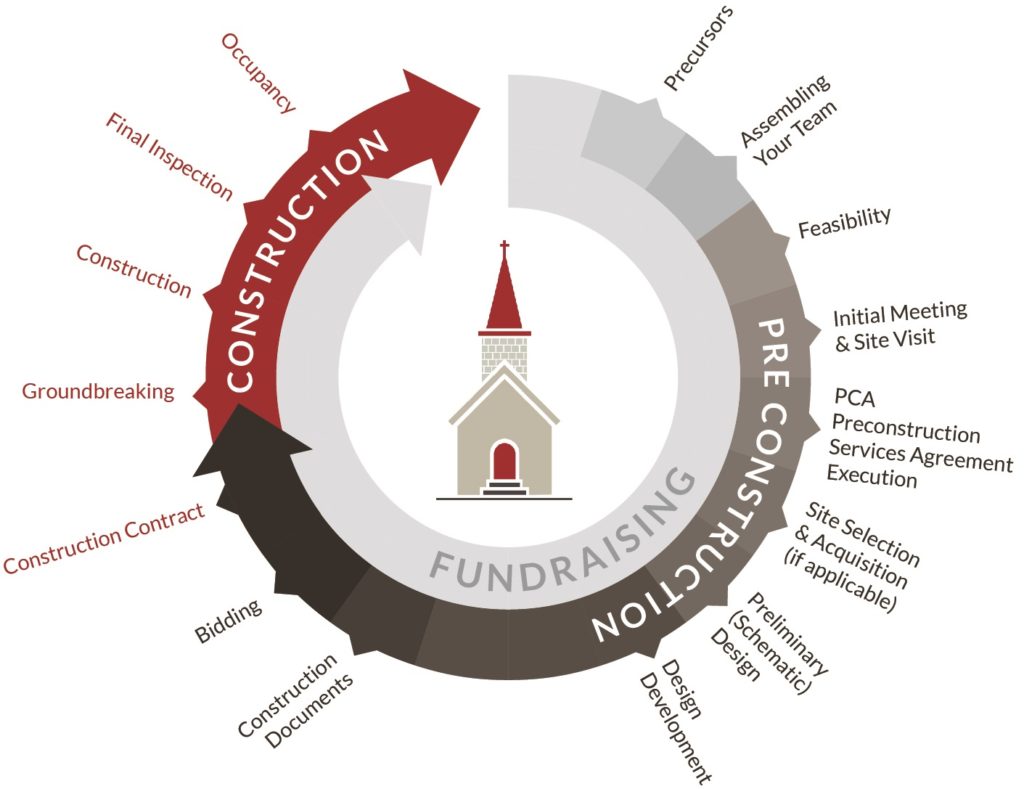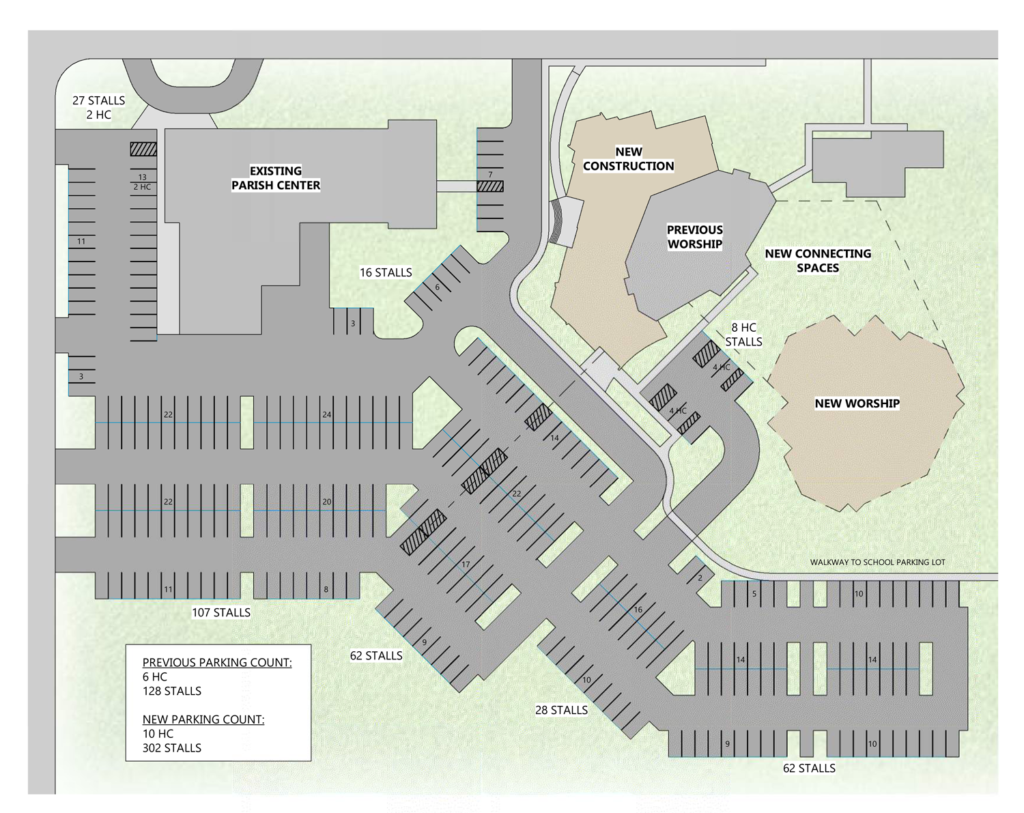This is the third article in our four-part series detailing the church building process.
The first step: Assembling Your Team: The Key to Successful Church Construction
The second: Assessing the Feasibility of Your Church Construction Goal
The fourth: Church Preconstruction Explained: Part 2
Now you are ready to move into the preconstruction part of the building process. At this point, some level of commitment, such as a preconstruction services agreement with your contractor (and associated fee), is required. Preconstruction typically takes between four and 18 months (often longer than construction), and is divided into phases, including programming, site suitability and analysis, schematic design, design development, construction documents and more.

Preconstruction Services Agreement
NCI-Roberts Construction recommends churches sign a Preconstruction Services Agreement (PCA) prior to beginning preconstruction. The agreement and associated fee covers architectural and engineering services if applicable, budgeting and other key support; defines the roles and responsibilities of all stakeholders, including the client; and establishes scope and timeline. It functions as a mutual faith agreement to move forward with the project as a team, and it formally initiates contractor activity.
Programming and Site Suitability and Analysis
Preconstruction begins with site visits and meetings to better understand the intended uses of the space, and the needs and priorities of the various user groups. If the project is new construction or involves an addition, the team also analyzes the land’s suitability for building during site visits.
Schematic Design
Schematic Design (SD) primarily refers to the first set of architectural drawings. When completed in coordination with a contractor, the drawings are accompanied by budget estimates and additional data and strategy. This phase of preconstruction offers many opportunities for cost control or value engineering.

Intentionally creating multipurpose spaces is one strategy. Classic examples include a gymnasium that doubles as a fellowship hall or worship space, a library and counseling room, and a small chapel that can accommodate overflow at larger services. This “hardworking square footage” ensures your church gets the most use out of the space.
Understanding the impact of selections on cost per square foot is another key component. NCI-Roberts offers a “bronze silver gold” process, estimating different quality levels of various building components. We can also estimate options that can be decided later in the process when there is a better understanding of funds and financing.
Master planning and phasing prioritizes immediate needs over additional wants or “nice to haves,” enabling a church’s physical expansion to better coordinate with its congregational and financial growth. This long-term strategy helps avoid wasted effort and expense.
Input and Buy-In
Once a schematic design draft is complete, a church building committee should share it with a slightly wider audience and seek additional input. This “soft launch” within focus groups can provide key buy-in, especially if feedback is incorporated as SDs are finalized.
The last step of schematic design is vision casting, where final SD drawings, budget estimates, and benefits of building are shared with the entire congregation. This step also sets the stage for formal fundraising, like a capital campaign.
Contact our team to learn more about preconstruction and the advantage of involving a contractor early, or explore some of the projects for which we have provided significant preconstruction services: Lighthouse Church and Christian School, Fulton Church, Sugar River United Methodist Church, Asbury United Methodist Church, and Unity of Madison.